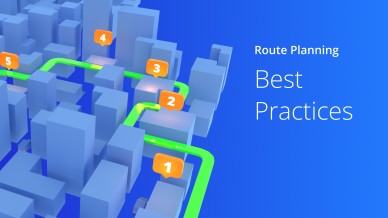The Federal Motor Carrier Safety Administration (FMCSA) had already announced the new hours of service rules on May 14 and the rules came into effect on September 29.
After the final electronic logging device (ELD) mandate took place on January 20, 2020, the FMCSA organized several town hall meetings to consolidate feedback from all those who are directly impacted. This resulted in the FMCSA changing the hours of service rules.
The FMCSA claims that the hours of service reform will give drivers more flexibility as they’ll have better control over their day, while keeping the amount of time they are allowed to be on duty, inclusive of driving time, the same as before.
Below, we take a look at how the new FMCSA hours of service regulations differ from the earlier ones and how you and your drivers can comply.
The Four Major Hours of Service Changes
1. Short-Haul Exemption
Old Rule
Earlier, those drivers who opted for short-haul exemption were not allowed to be on driving duty for more than 11 hours and were prohibited from driving beyond 100 air-miles radius (equivalent to 115 miles).
If any drivers exceeded those limits, they would no longer be able to use the exemption and would have to fill up a Record of Duty Status (RODS) and even take a 30-minute break.
Revised Rule
As per the new FMCSA hours of service changes, the short-haul exemption has been extended to 14 hours of on-duty shift and a driving limit of up to 150 air-miles.
Impact
The new rule will increase your fleet’s flexibility by permitting your drivers to be on duty for longer and drive more miles.
As per the FMCSA, the positive impact of this new hours of service provision is that a driver in Peoria, who previously couldn’t service St. Louis or Chicago, will now be able to do so because the provision now allows two additional hours.
And, with the service times parameter integrated into certain route planner apps, you’ll be able to define the same or different service times for each stop on your routes and the system will automatically compute the total route times, providing more realistic and precise time figures for completing the routes.
2. Adverse Driving Conditions
Old Rule
As per the previous rule, drivers were allowed to use the provision of adverse driving conditions to expand their maximum drive time of 11 hours by a maximum of two hours.
However, this rule didn’t allow them to increase their maximum driving window of 14 hours.
Revised Rule
The new rule allows drivers to extend the maximum driving window to 16 hours during adverse driving conditions.
However, drivers must be made aware that neither peak-hour traffic nor snowstorms that had been forecasted over the last couple of days would qualify under this provision as such instances wouldn’t constitute “unforeseen”.
An unexpected accident that halts traffic or a sudden hail storm would count and drivers can use the provision of adverse driving conditions.
Impact
This FMCSA hours of service rule change improves driver safety. They can now afford to wait for the adverse weather conditions or traffic jams to improve by parking their vehicle, instead of attempting to maximize their driving window by driving through such conditions.
However, when you plan routes using a delivery route planner app, neither you nor your drivers need to worry about weather conditions.
The software will help you plan routes that take into account bad weather conditions in addition to other constraints which are also taken into account.
In fact, Route4Me comes with a Predictive Weather advanced constraint feature that automatically gathers weather data from multiple sources and notifies you about poor or dangerous weather conditions in an area where you’re planning routes. In this way, you can set up weather-related slowdowns for travel and service times.
Want To See For Yourself How Route4Me Can Boost Your Profits?

3. 30-Minute Break
Old Rule
Earlier, drivers were mandated to take a 30-minute break, while they were off-duty after more than eight consecutive hours had passed since the last off-duty period.
Revised Rule
The 30-minute break can now be taken during on-duty time as well (apart from off-duty in the sleeper berth), while a driver waits at the petrol station to get fuel or visits the restroom and has a quick drink.
Impact
This revised provision gives drivers more flexibility and improves their efficiency.
You wouldn’t want your drivers to have hours of service violations for not taking enough breaks as a break will help them freshen up, relax, and stay alert for their next drive. And, you can now insert such breaks automatically into your drivers’ planned routes with a route optimization software.
Such software comes with an add-on for driver breaks which can be inserted with the click of a button. Once the adjustable break periods have been inserted into the planned routes, the route planner will automatically select the most optimal location along the sequence of stops. It will then be able to calculate the total time and distance for the route appropriately.
Learn how Route4Me’s driver breaks feature helps reduce driver fatigue and improve productivity.
4. Split-Sleeper Berth
Old Rule
Drivers were allowed to use the sleeper berth for an eight-to-two split. This meant that they could rest for eight consecutive hours and then have another rest window of two hours separately.
Revised Rule
This driver hours of service provision has been changed to permit drivers to fulfill the minimum off-duty rest requirement of 10 hours by spending a minimum of seven hours in the sleeper berth, along with a minimum off-duty period of two hours which can be spent inside or outside the berth.
The only condition is that the two periods should sum up to a minimum of 10 hours.
Impact
The revised provision gives drivers more flexibility to use the sleeper berth periods, thereby increasing the likelihood of them using these periods and improving their safety (as they will not be fatigued).
Final Thoughts about the New FMCSA Hours of Service Rules
Your drivers don’t need to worry about remembering these FMCSA hours of service changes to avoid any related hours of service violation penalties.
All these FMCSA hours of service rules have been incorporated automatically into the delivery scheduling software that your drivers use. Make sure your drivers and on-field team members are reminded to ensure the fulfillment of the FMCSA hours of service regulations.
Do you have any questions about the new hours-of-service rules and how a multi-stop route planner can help? Please feel free to leave your comments below.
Want To See For Yourself How Route4Me Can Boost Your Profits?







